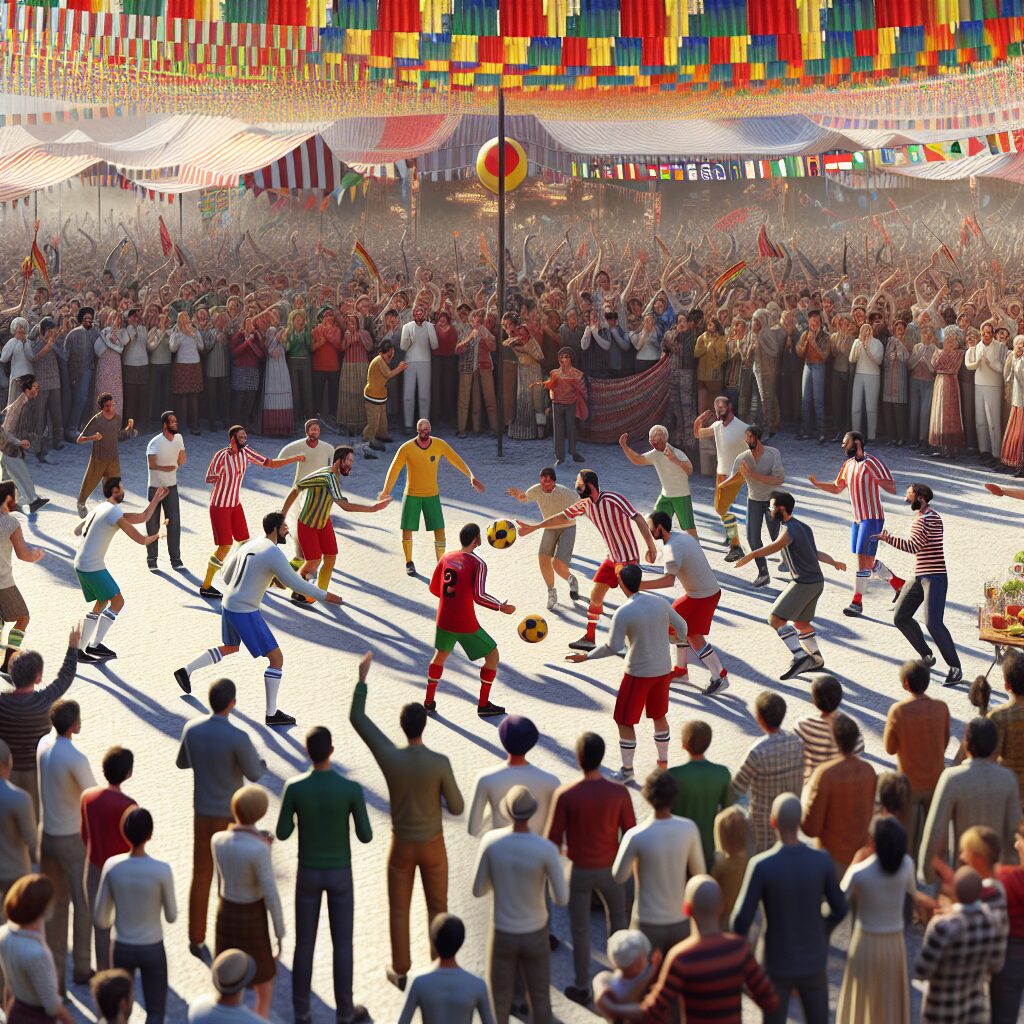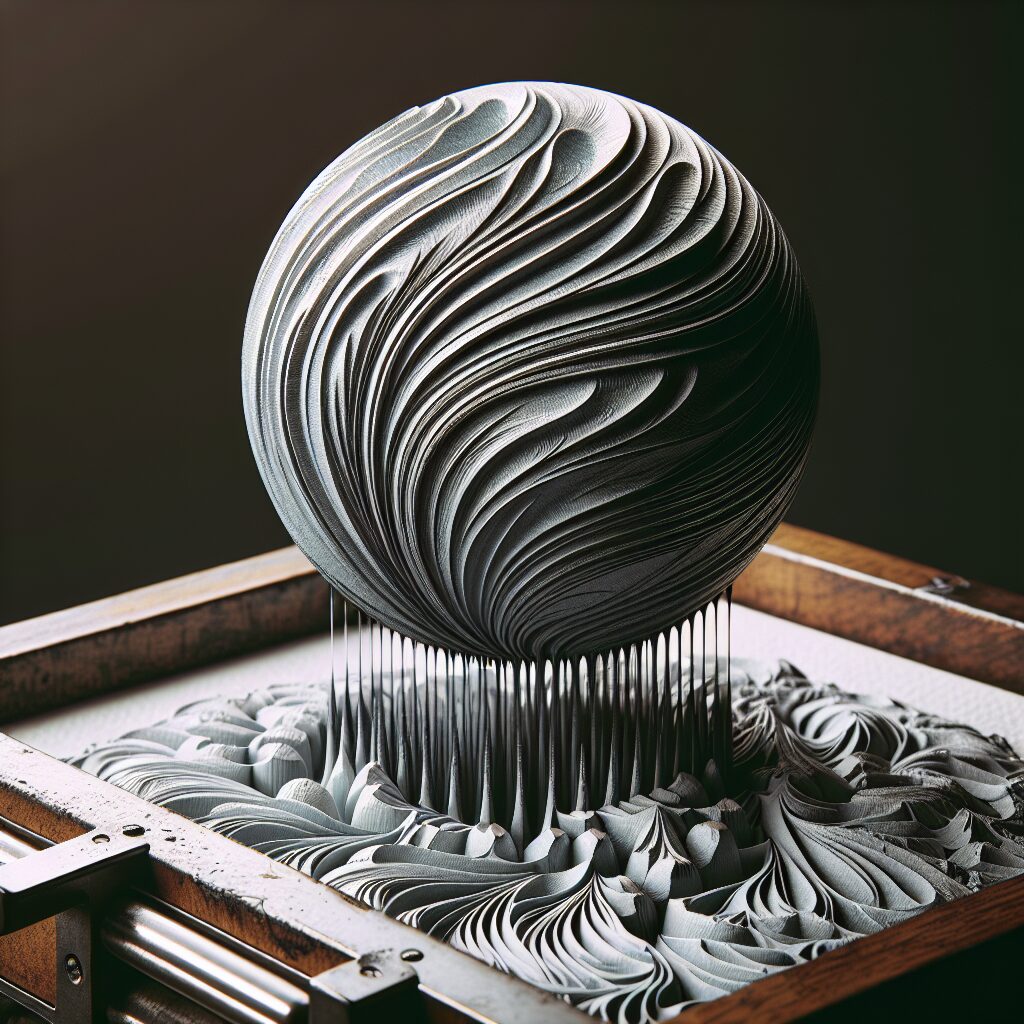Kinetic Sculpture: The Dynamic World of Ball Art
Kinetic sculpture, also known as moving sculpture, is a unique form of artistic expression that brings objects to life through motion. These sculptures are often powered by wind, water, or mechanical means, and they captivate viewers with their mesmerizing movements. One remarkable feature of kinetic sculpture is its ability to engage multiple senses, as it combines the visual appeal of a static artwork with the added dimension of movement. These sculptures can be found in various forms and sizes, ranging from small tabletop pieces to large outdoor installations. The impact of kinetic sculpture goes beyond aesthetics, as it sparks curiosity and encourages interaction, allowing viewers to experience art in a whole new way.
In the world of kinetic sculpture, one striking feature is the use of balls as a central element in many artworks. These spherical objects are often used as a medium to create captivating movements and patterns. From cascading marbles to rolling spheres, the use of balls in kinetic sculpture adds an element of unpredictability and fluidity to the artwork. The interaction between the balls and their surrounding environment creates a dynamic display that continuously changes and evolves over time. This unique aspect of kinetic sculpture sets it apart from static sculptures, as it invites viewers to engage with the artwork on a deeper level.
In the coming sections of this article, we will delve into the fascinating world of kinetic sculpture and explore its various forms, materials, and techniques. We will also discuss the key takeaways from this exploration, including the benefits of incorporating kinetic sculpture in public spaces and the impact it has on viewers. So, let’s embark on this journey together and immerse ourselves in the dynamic world of ball art.
Key Takeaways
1. Kinetic sculptures are fascinating artworks that incorporate movement through the use of various mechanisms such as motors, gravity, and even wind power. These sculptures create a dynamic and visually captivating experience for viewers.
2. Ball-based kinetic sculptures are particularly popular due to their ability to showcase physics principles such as gravity, momentum, and balance. They often feature an intricate system of ramps, tracks, and loops that allow the balls to travel in mesmerizing patterns.
3. The creation process of kinetic sculptures involves careful planning and engineering to ensure that the mechanisms are properly designed and function smoothly. Artists often spend significant amounts of time experimenting with different materials and elements to achieve the desired aesthetic and movement.
4. Kinetic sculptures have gained recognition not only in the art world but also in science and education. They are frequently used as teaching tools to illustrate concepts like energy, motion, and even complex scientific theories. These artworks offer a unique and engaging way to approach learning and understanding abstract concepts.
5. The future of kinetic sculptures is bright, as artists continue to push boundaries and experiment with new technologies and materials. The incorporation of digital elements, such as sensors and programmable controllers, opens up new possibilities for interactive and responsive sculptures that can adapt to their environment or audience. Kinetic art is an ever-evolving field that promises to surprise and inspire in the years to come.
What is the Dynamic World of Ball Art?
Kinetic Sculpture: The Dynamic World of Ball Art is an exploration of the fascinating world of sculptures that incorporate the use of balls or spheres to create mesmerizing movements and intriguing visual effects. These innovative artistic creations captivate audiences with their dynamic motion, as well as their intricate designs and craftsmanship. Let’s delve deep into this captivating realm of ball art!
The Origins and Evolution of Kinetic Sculpture
Kinetic sculpture has its roots in the early 20th century when artists began to experiment with incorporating movement into their artwork. The term “kinetic” refers to the energy or motion of an object. Over time, artists found a unique way to infuse this dynamic energy into sculptures, giving birth to kinetic sculpture. Today, the captivating world of ball art has become a prominent aspect of kinetic sculpture.
Unleashing the Power of Balls in Sculpture
Incorporating balls or spheres into kinetic sculpture adds a whole new dimension to the artwork. The spherical shape allows for smooth rolling or spinning motion, creating a mesmerizing and ever-changing display. These balls can be set in motion by a variety of mechanisms, such as gravity, wind, or even mechanical systems, resulting in an endless array of captivating movements.
The Artistic Vision Behind Ball Sculptures
A ball sculpture is not just a visual spectacle but also a manifestation of the artist’s unique vision and artistic expression. The intricate designs, choice of materials, and careful engineering all contribute to the creation of a mesmerizing piece of art. Artists often carefully consider the balance between aesthetics and functionality, aiming to create sculptures that not only captivate the eye but also evoke emotions in the viewers.
Ball Art as a Symbol of Movement and Transformation
Ball sculptures often symbolize various concepts, such as the beauty of constant change and transformation or the ceaseless movement of life. These artworks can serve as a reflection of the perpetual motion that surrounds us, reminding us of the ever-shifting nature of the world. The mesmerizing movements of the balls in these sculptures can create a sense of tranquility and harmony while also provoking thought and contemplation.
The Versatility of Ball Sculptures
The world of ball art encompasses a wide range of styles and forms. From large outdoor installations that interact with natural elements like wind and water to smaller indoor pieces that bring a touch of magic to any space, ball sculptures offer endless possibilities. The versatility of these artworks allows them to fit seamlessly into various environments, whether it be a public park, a gallery, or even a private home.
Taking Part: Exploring Kinetic Sculpture
- Visit exhibitions and galleries showcasing kinetic sculpture to experience the wonder of ball art firsthand.
- Join workshops or classes to learn about the techniques and principles behind creating kinetic sculptures.
- Connect with artists and enthusiasts through online communities or social platforms to expand your knowledge and appreciation for this unique art form.
FAQ
What is a kinetic sculpture?
A kinetic sculpture is a type of artwork that incorporates mechanical elements to create motion and visual interest. These sculptures often use various materials and techniques to capture the beauty of movement and physics.
How do kinetic sculptures work?
Kinetic sculptures typically consist of different components like motors, gears, wheels, and weights. These elements are carefully designed to work together, creating a chain reaction that sets the sculpture in motion. The movement can be powered by wind, water, electricity, or even human interaction.
What materials are used in kinetic sculptures?
Kinetic sculptures can be made from a wide range of materials, including metal, wood, plastic, glass, and even found objects. The choice of materials depends on the artist’s vision and desired aesthetic. The use of different materials adds texture and visual interest to the artwork.
Why are ball bearings commonly used in kinetic sculptures?
Ball bearings are often used in kinetic sculptures because they provide smooth and reliable movement. These small metal balls reduce friction between moving parts, allowing the sculpture to glide and rotate effortlessly. The use of ball bearings enhances the fluidity and grace of the sculpture’s motion.
Are kinetic sculptures interactive?
Some kinetic sculptures are designed to be interactive, inviting viewers to become participants by manipulating certain elements or activating sensors. These interactive sculptures create a dynamic and engaging experience, blurring the line between art and audience.
Can kinetic sculptures be displayed outdoors?
Yes, many kinetic sculptures are created for outdoor display. These sculptures are often built to withstand different weather conditions and are made from durable materials that can withstand exposure to elements like rain, wind, and sunlight. Outdoor kinetic sculptures can provide a striking visual statement in parks, gardens, or public spaces.
How are kinetic sculptures maintained?
To maintain the integrity and functionality of kinetic sculptures, regular inspection and cleaning are necessary. Lubricating moving parts, checking motors and connections, and addressing any damage or wear are part of the maintenance routine. It is essential to consult or hire a professional to handle the maintenance and ensure the longevity of the artwork.
Where can one see kinetic sculptures?
Kinetic sculptures are exhibited in various locations, such as museums, art galleries, sculpture parks, and public installations. Some cities host specific exhibitions or festivals dedicated to kinetic art. Additionally, many artists have their work displayed in online galleries and social media platforms, allowing broader accessibility to the art form.
How can I start collecting kinetic sculptures?
To start collecting kinetic sculptures, it’s advisable to explore art galleries, attend art fairs, and research artists specializing in kinetic art. Developing an understanding of different styles, artists, and techniques will help in making informed purchases. Additionally, connecting with art consultants or galleries specializing in kinetic art can provide valuable guidance and insights.
Are kinetic sculptures expensive?
The price of kinetic sculptures varies depending on factors such as the complexity, size, reputation of the artist, and the materials used. Kinetic sculptures can range from affordable pieces to high-end artworks. As with any art collection, it’s important to set a budget and consider personal preferences when purchasing kinetic sculptures.
Final Thoughts
Kinetic sculpture offers a fascinating convergence of art and engineering, captivating viewers with its mesmerizing motion and architectural beauty. The dynamic nature of ball art brings the principles of physics to life, showcasing the harmony between design and motion. As technology advances, kinetic sculpture continues to evolve, presenting new possibilities and pushing boundaries in the art world.
Whether displayed in public spaces or cherished in private collections, kinetic sculptures spark wonder, curiosity, and contemplation. These captivating artworks remind us of the beauty and power in movement, urging us to appreciate the invisible forces that shape our existence. Through kinetic sculpture, artists create dynamic worlds of ball art that invite us to experience the magic of motion in ways that words alone cannot express.




